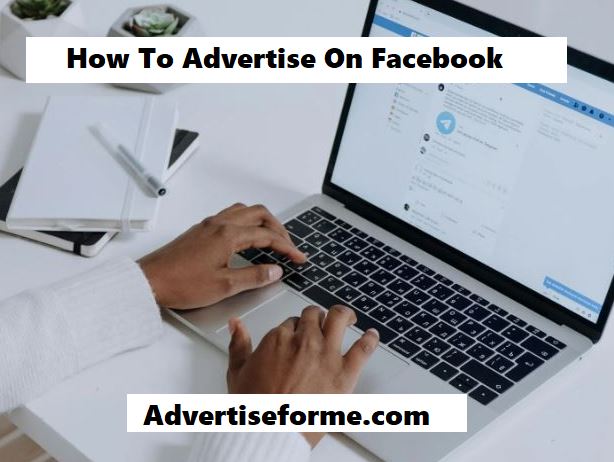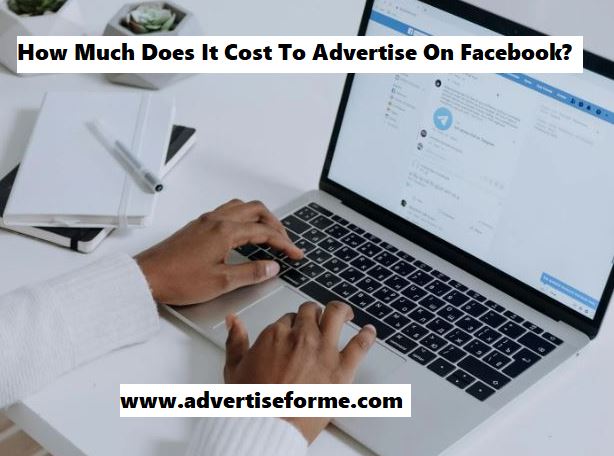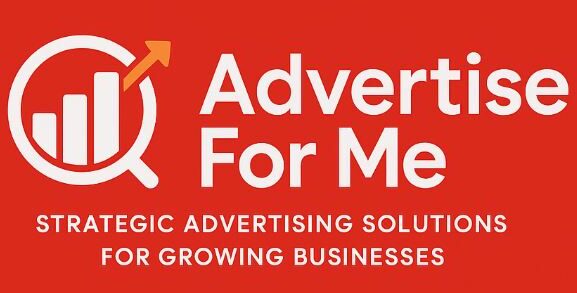
How Advertise On Facebook: Facebook is more than a place for birthday posts and funny videos. It’s one of the best places to advertise your business. Millions of people scroll through Facebook every day. That means your customers are already there. You just need to know how to show up in the right way.
Many small business owners think Facebook ads are only for big brands. Not true. Anyone can run ads. You can start small and get results. Whether you’re promoting shoes, food, online classes, or home services, Facebook gives you tools to reach your people. The key is knowing what to post, how to target, and how to spend your money without wasting it.
In this post, I’ll walk you through how to advertise on Facebook. I’ll cover free and paid options, how ads work, how much they cost, and how to get started if you’ve never run an ad before. If you’re serious about growing your business, this is where you start.
Also, READ
Can You Advertise Services On Facebook Marketplace
How Do Beginners Advertise On Facebook?
If you’re new, Facebook might feel confusing. Don’t worry. Start with the basics. First, set up a Facebook page for your business. This is not your personal profile. It’s where you post updates, photos, and run your ads. Make sure your page has a clear name, profile photo, cover image, and your contact info.
Next, learn to use Facebook Ads Manager. This is where all ads are created and managed. Don’t click the “Boost Post” button right away. That’s too basic. Ads Manager gives you full control over who sees your ad, what they see, and when they see it.
When setting up your first ad, pick a goal. Do you want more clicks, more messages, or more video views? Facebook asks this up front. Pick one. Then choose your audience. You can target by age, location, gender, interests, and even job title. This is why Facebook ads work. You get super specific.
Now create your ad. Add a photo or video. Write a short, clear message. Keep it real. Don’t overpromise. Use simple words. Say what your product is, why it helps, and what you want people to do. That’s it. Set your budget, choose how long the ad runs, and click publish.
Start small. Try 5 dollars a day for a week. Watch what happens. If it works, scale it. If it flops, change the picture or message. Facebook ads take time to learn. The key is to test, learn, and test again.
How To Advertise In Facebook For Free?
You don’t need to pay right away. There are free ways to promote your business on Facebook. The first one is your business page. Post there often. Share behind-the-scenes photos, customer reviews, short videos, and helpful tips. Don’t just post about sales. Post stuff that makes people stop scrolling.
Join local groups or niche groups related to your business. If you run a food truck, join local food groups. If you sell clothes, join style or fashion groups. Post useful content. Comment on posts. Answer questions. Over time, people notice you. Then you can share your business page or product when it fits the talk.
Facebook Stories are also free. Use them to show short clips, new stock, daily deals, or just you doing your work. Stories stay up for 24 hours and show at the top of the screen, so more people see them.
Ask happy customers to tag you in their posts. This puts your name in front of their friends. It’s like free ads. Offer small rewards for shoutouts. Even just saying thanks goes a long way.
You can also post in Facebook Marketplace. If you sell physical items, it’s a great spot. Add clear photos, short text, and your price. People in your area will find you without paid ads.
Free promotion takes more time than paid ads. But it builds trust and reach. If you stay active and show real value, people will start to follow and buy.
How Do Beginners Run Facebook Ads?
If you’ve never run an ad before, don’t worry. Facebook makes it easy. First, go to Facebook Ads Manager. You’ll see a button that says “Create.” Click it. You’ll be asked to choose your ad goal. Pick one. Keep it simple. If you want clicks, choose “Traffic.” If you want sales, choose “Conversions.” Don’t pick more than one.
Now it’s time to choose your audience. This is the most important part. Your ad is only as strong as the people who see it. Start by picking age, gender, and location. Then narrow it down with interests. If you sell sports gear, target people who like fitness, gym pages, or sports brands.
Next, create your ad. You can use a photo, video, or slideshow. Keep the image clean and eye-catching. Avoid too much text on the image. Facebook doesn’t like that.
Write a short, clear message. Start with the pain or problem. Then offer your product as the fix. Add a call to action. Like “Shop Now,” “Send Message,” or “Learn More.” Keep it human. No need to sound like a robot.
Set your daily budget. Beginners should start with 5 to 10 dollars a day. Run your ad for 5 to 7 days. Don’t change it right away. Give it time. Then check the results. Look at clicks, views, and cost. If it’s working, run it again or raise the budget. If not, try new text or a new photo.
Facebook ads are not magic. But they work when you test, learn, and improve. Every business starts with a first ad. Yours can too.
How Much Does It Cost To Advertise On Facebook?

The cost of Facebook ads depends on what you’re doing. On average, most small businesses spend between 5 and 50 dollars per day. You don’t need a big budget to start. You can run ads for as little as 1 dollar a day. But the more you spend, the more people see your ad.
Facebook charges you based on the result you want. If you want clicks, you pay per click. If you want views, you pay per 1000 views. The cost per click (CPC) is usually between 10 cents and 2 dollars. Cost per 1000 views (CPM) is often between 1 and 15 dollars.
Costs change based on your audience. If you target a wide audience, it’s cheaper. If you target a narrow group, it costs more. The more people compete to reach the same users, the higher the price.
Your ad quality also matters. Facebook scores your ad. If it gets likes, comments, and clicks, the cost goes down. If people ignore it, the cost goes up. That’s why testing is key.
The good part? You control your budget. Set a daily or total limit. Pause anytime. No surprises. Start low, see what works, then scale up.
How Much Does Facebook Pay For 1000 Views?
Facebook only pays you if you create video content and join their monetization program. This is called Facebook In-Stream Ads. It’s for creators who post long videos and have enough followers and views.
If you qualify, Facebook runs ads before or during your videos. You earn money based on how many people watch the ad. On average, Facebook pays about 1 to 3 dollars for every 1000 video views. But it depends on your country, audience, and engagement.
If your video is just a regular post or ad, Facebook doesn’t pay you. In fact, you’re the one paying for views. So don’t confuse advertising your business with being a video creator. Two different things.
If you want Facebook to pay you, you need to grow a video channel. That’s a whole other game. For business owners, focus on sales, not views.
How Much Is A Facebook Ad In Naira?
Facebook lets you pay in Nigerian Naira. This makes it easier for small businesses in Nigeria to advertise. As of now, the lowest daily ad spend in Naira is around ₦400 to ₦500. That’s the same as 1 dollar per day.
The cost per click or view in Naira changes based on your target audience, ad quality, and competition. A good estimate is between ₦30 and ₦200 per click. If your ad is well made and hits the right people, the cost drops.
You can pay using local cards, PayPal, or connected bank accounts. Just make sure your payment method is working and has funds before you launch your ad.
Start small. Maybe ₦1000 per day. Run for a week. Then check what worked. Spend more only when your ad gives results. Facebook gives you full control of your spend.
How Much Does Facebook Pay For 1 Million Views?
This only applies to video creators, not business ads. If you create videos and qualify for In-Stream Ads, you can earn money from your content. For every 1 million views, Facebook usually pays between $500 and $3000. It depends on the country, watch time, and ad type.
If most of your viewers are in Nigeria or other African countries, the pay is lower. If your audience is in the US, UK, or Canada, the pay is higher.
To get paid, your page needs at least 10,000 followers. Your videos must get 600,000 total watch minutes in the last 60 days. And you must follow Facebook’s rules.
For business owners, this doesn’t really help. Facebook won’t pay you for ads. You’re not a content creator,
you’re an advertiser. The goal is sales, not payouts from Facebook.
What Does CPM Mean?
CPM means “Cost Per 1000 Impressions.” It’s how much you pay to show your ad 1000 times. Impressions are how often your ad is seen, not clicked.
For example, if your CPM is 5 dollars, you’re paying 5 dollars every time 1000 people see your ad. It doesn’t matter if they click or not.
CPM is good for brand awareness. If you just want to get your name out there, go for a low CPM. But if you want clicks or sales, focus on cost per click (CPC) or cost per action (CPA).
CPM prices change. A strong ad with high likes and shares will cost less per 1000 views. A weak one will cost more. Always track your CPM in Facebook Ads Manager. If it’s too high, your ad might need a better photo or message.
Conclusion
Facebook gives you all the tools to grow your business. Whether you’re new or already running ads, you can start small and win big. Learn the platform. Set up your page. Try free methods. Then test ads with low budgets.
Know what you’re paying for. Watch your numbers. Keep your message clear. Speak to the right people. And never stop testing. The best ads come from trial, not luck.
Now that you know how it works, it’s time to act. Open your Ads Manager. Create your first ad. And show your business to the people who need it.

Leave a Reply